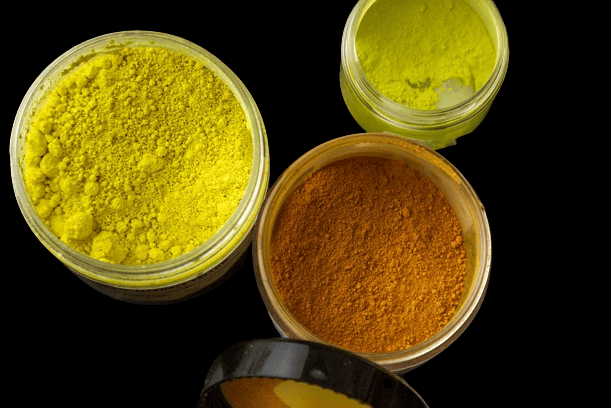Cannabis flowers generate a range of pigments, which also have brownish yellow pigment that give them their distinctive hues. Anthocyanin, which ranges from red to purple, is one of these pigments. The function, synthesis, and many forms of anthocyanins present in marijuana flowers will all be covered in this article’s investigation of their involvement in the manufacture of marijuana.
We’ll also talk about the advantages of ingesting marijuana, which has a lot of anthocyanins, and how to boost anthocyanin production.
Contents
- 1 How cannabis plants make anthocyanins
- 2 The role of anthocyanins in cannabis plants
- 3 The different types of anthocyanins found in cannabis
- 4 How to increase anthocyanin production in cannabis plants
- 5 The benefits of anthocyanins in cannabis consumption
- 6 Conclusion: The Role of the Brownish Yellow Pigment in Cannabis Production
How cannabis plants make anthocyanins
Cannabinoids, flavonoids, and terpenes are just a handful of the compounds produced by marijuana flowers. The reddish-purple hues of marijuana flowers are attributed to a type of flavonoid known as anthocyanins. These pigments are produced by the microscopic, sticky glands known as trichomes that coat the surface of marijuana flowers.
Several factors, including light, temperature, and the presence of nutrients, can cause the synthesis of anthocyanins. Light has the most significant impact because light promotes the synthesis of the enzymes required for the biosynthesis of anthocyanins.
Temperature is another element because high temperatures might inhibit the formation of anthocyanins. The synthesis of anthocyanins depends critically on the availability of nutrients, particularly phosphorus and nitrogen.
The amino acid required for the production of anthocyanins is phenylalanine. Cannabis produces anthocyanins through a well-defined process involving enzyme activities that convert phenylalanine to anthocyanins. Chalcone synthase (CHS), anthocyanidin synthase (ANS), and phenylalanine ammonia-lyase (PAL) are the enzymes that catalyze these processes.
Plant vacuoles are the sites where anthocyanins congregate. Every plant cell contains a tiny, membrane-bound chamber known as a vacuum. Proteins, carbohydrates, and colors are just a few substances they store. Cannabis flowers accumulate their anthocyanins in their vacuoles, where they give the plant its color.
The role of anthocyanins in cannabis plants
Intense purples, vivid oranges, and blazing reds are just a few of the hues that cannabis plants may display, thanks to pigments called anthocyanins. These pigments are produced in the plant’s trichomes, which are microscopic, hair-like structures that coat the surface of the leaves and buds. Light, temperature, and the availability of nutrients are some of the variables that affect anthocyanin production.
Protecting cannabis flowers from external challenges is one of the most critical functions of anthocyanins. These pigments protect the plant from the sun’s UV radiation, high temperatures, and drought. Because they are natural repellants, anthocyanins shield the plant from illnesses and pests.
Anthocyanins enhance the general health and vitality of the cannabis plant in addition to their defensive role. Photosynthesis is the process by which plants transform light energy into chemical energy, and it involves the usage of these pigments. The plant’s anthocyanins also control the plant’s water balance and nutrient intake.
In conclusion, the antioxidant and anti-inflammatory qualities of anthocyanins may augment the possible health advantages of cannabis consumption. Whereas anti-inflammatories lessen inflammation, antioxidants aid in protecting cells against harm.
Cannabis has been demonstrated to offer numerous health advantages, including lowered levels of anxiety, inflammation, and discomfort. These characteristics could account for some of the benefits.
The state and well-being of cannabis flowers are significantly influenced by a significant class of pigments known as anthocyanins. These pigments help the plant maintain general health and vigor, shield it from environmental stresses, and may even play a role in the potential health benefits of recreational cannabis use.
The different types of anthocyanins found in cannabis
- The many anthocyanin forms found in cannabis are responsible for the plant’s great variety of colors and characteristics. The anthocyanins found in cannabis that are most common include cyanidin, delphinidin, peonidin, and malvidin.
- Cannabis strains’ characteristic red and purple colors are caused by cyanidin. Its antioxidant qualities are well known, and research has been done on its possible benefits in lowering inflammation and enhancing cardiovascular health.
- The violet and deep blue colors of cannabis are attributed to delphinidin, another common anthocyanin. Its demonstrated antioxidant and neuroprotective properties may protect brain cells from damage.
- Delphinidin and cyanidin are more common in cannabis than peonidin. It imparts a reddish-purple color to the plant and is associated with antioxidant and anti-inflammatory properties.
- Deep purple and blue hues would be the result of cannabis grown with malvidin, as is well known. Research has been conducted into its potential antioxidant and anti-cancer properties, but more studies are necessary to understand its effects fully.
- These anthocyanins shield marijuana flowers from harmful elements like UV radiation, drought, and extremely high or low temperatures. Plant anthocyanins act as natural sunscreens, absorbing and dispersing excess light energy and protecting the fragile plant tissues from harm. Adding them makes the plant more resistant to diseases and pests and can better withstand harsh conditions.
How to increase anthocyanin production in cannabis plants
Cannabis plants are more robust, beautiful, and damage-resistant because they produce more anthocyanins. Here are several approaches that could help you achieve your goal:
1. Ensure that your LED grow lights have high concentrations of blue and ultraviolet light. This will help your marijuana plants produce more anthocyanins. – To foster anthocyanin synthesis, purchasing LED grow lights emitting a high concentration of blue and ultraviolet light is recommended.
2. Lower the Temperature of the Blooming Stage: – Extreme heat or cold can inhibit anthocyanin production. “- Keep the temperature between 10 and 15 degrees Celsius (50 and 59 degrees Fahrenheit) all through the flowering phase.”- An In reaction to the decrease in temperature, the plant produces more anthocyanins, which strengthen its defenses against cold stress.
3. Include phosphorus and potassium supplements: – The anthocyanin-producing process in marijuana plants depends on phosphorus and potassium minerals. – A It is crucial to focus light on plants since they require a lot of light to create anthocyanins.
4. Plants can acquire the potassium and phosphorus they require through fertilizer solutions or soil amendments. Plants need at least 18 hours of light daily during the vegetative stage and 12 hours during the flowering stage. A hydroponic system can be configured to generate growing conditions rich in anthocyanins by carefully monitoring and controlling the levels of nutrients.
5. Use Reflective Products: – You can maximize light penetration and attain uniform distribution with reflecting materials.- A hydroponic system allows for the regulated maintenance of an environment with a constant supply of water and nutrients.
The benefits of anthocyanins in cannabis consumption
- The pigments called anthocyanins are responsible for the vibrant colors that marijuana plants display. The trichomes of marijuana plants are influenced in their development by several elements, including light, temperature, and the availability of nutrients.
- To keep marijuana plants robust and healthy and to protect them from harmful environmental factors, anthocyanins are essential. Since anthocyanins are both antioxidants and anti-inflammatory, they may increase the medicinal value of marijuana even further.
- Anthocyanins have antioxidant and anti-inflammatory properties, which we will review in this section, as well as their possible health advantages. Scientific evidence suggests anthocyanins can protect cells from oxidative stress, stop lipid peroxidation, and scavenge free radicals.
- Many long-term diseases, including cancer and cardiovascular disease, are associated with free radicals, which are unstable molecules. Potential harm could occur to both cells and DNA. When cell membranes are disrupted, lipid peroxidation occurs, ultimately leading to cell death. According to a study, anthocyanins can limit the release of inflammatory cytokines and decrease inflammation.
- They also have anti-inflammatory characteristics. Asthma, arthritis, Crohn’s disease, and other conditions are linked to chronic inflammation, in contrast to acute inflammation, which is a typical reaction to harm or infection.
- The antioxidant and anti-inflammatory qualities of the anthocyanins in marijuana suggest that its use may have beneficial benefits on health. Anxiety, sleep, and discomfort are just some of the health issues that marijuana may help with, according to the research. One possible explanation for these positive effects is that anthocyanins have anti-inflammatory and antioxidant characteristics.
- More research into the potential health advantages of anthocyanin-containing marijuana is necessary. From what we know, anthocyanins may play a role in marijuana’ health benefits.
Conclusion: The Role of the Brownish Yellow Pigment in Cannabis Production
Marijuana development relies on anthocyanins, which affect the plant’s aesthetics and could also have medicinal uses. The intricacies of anthocyanin synthesis and their impact on marijuana’s potency and quality necessitate further research. Farmers may improve their farming practices and use this remarkable color family by studying anthocyanin formation and accumulation routes.










